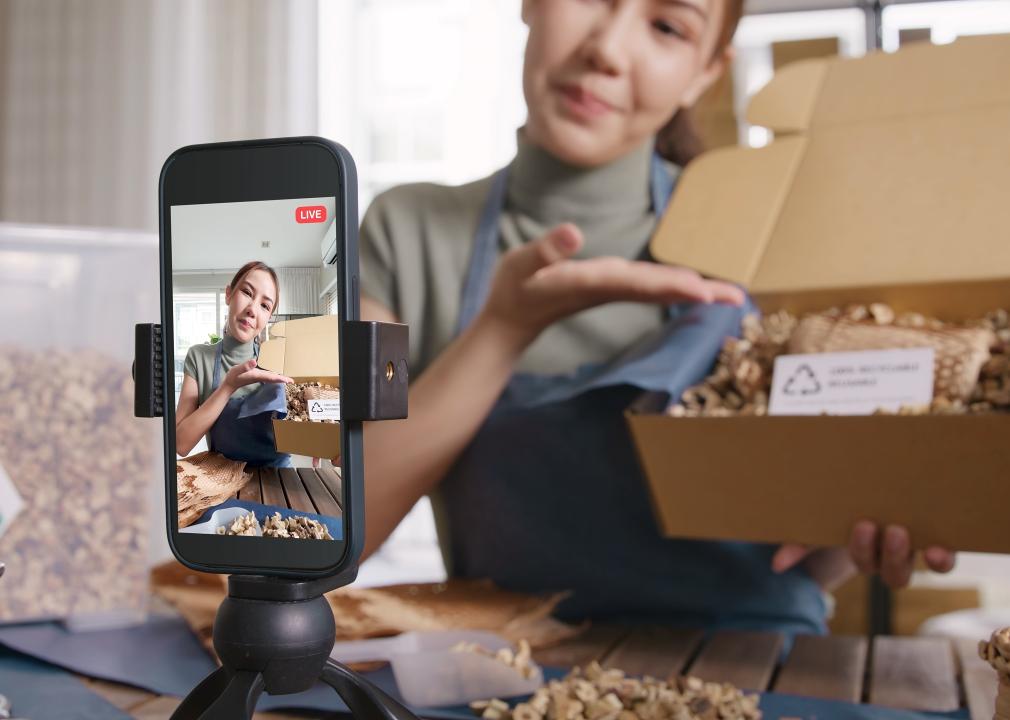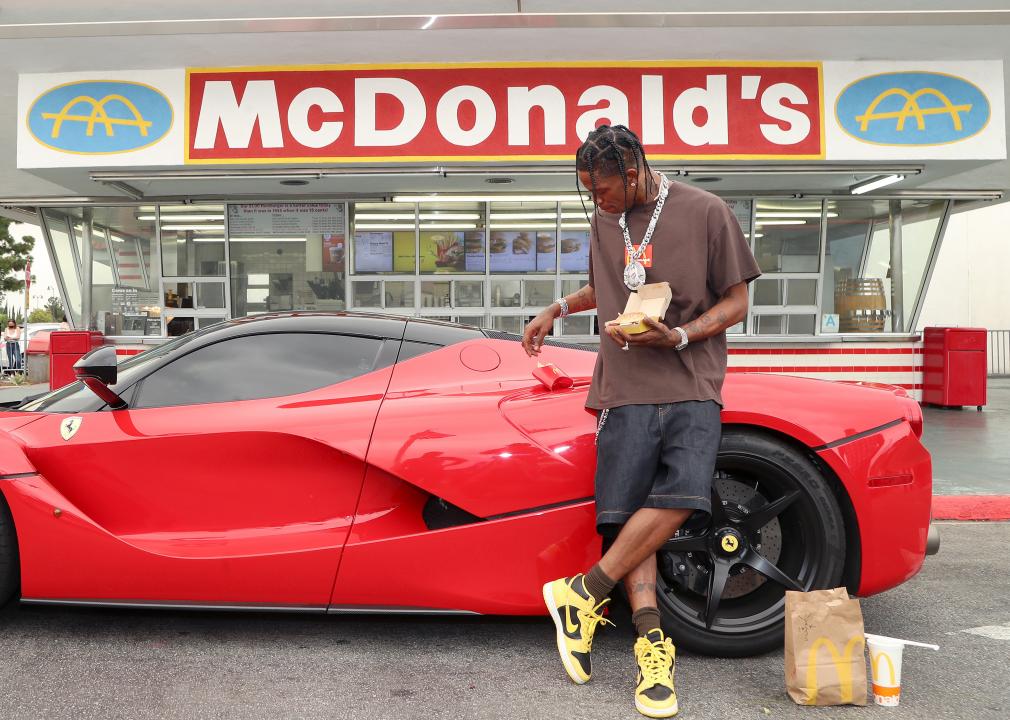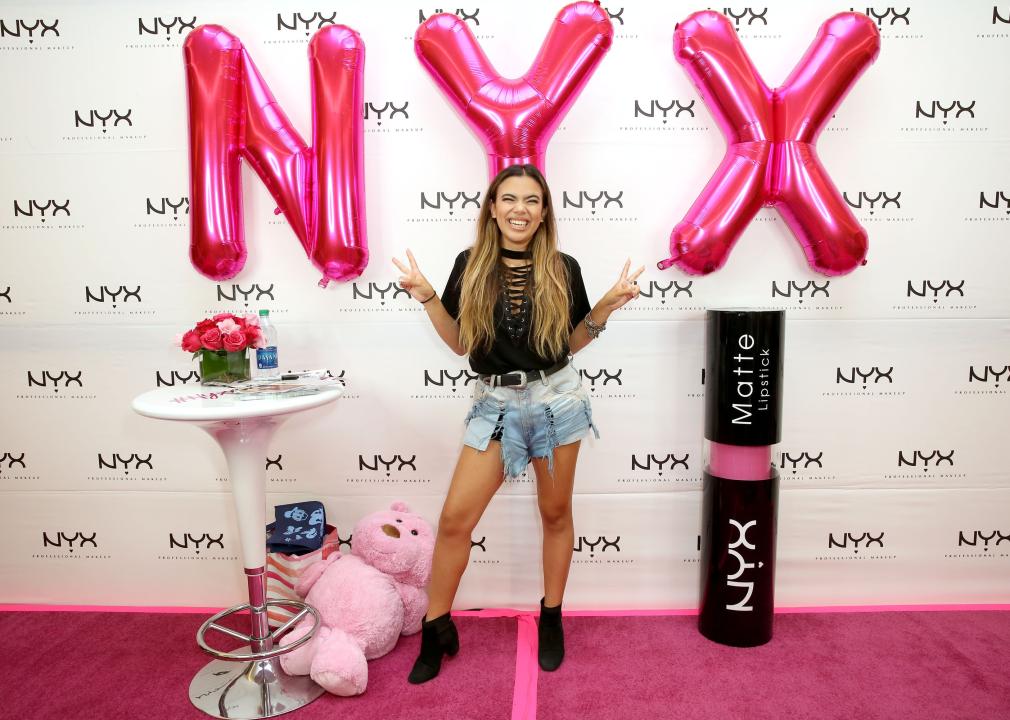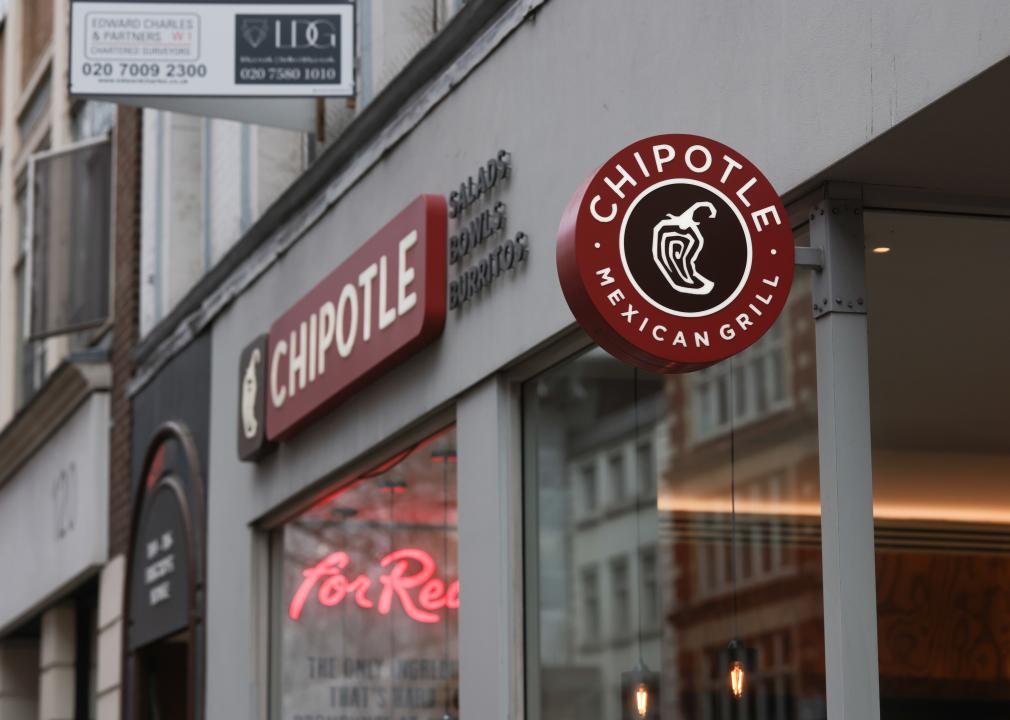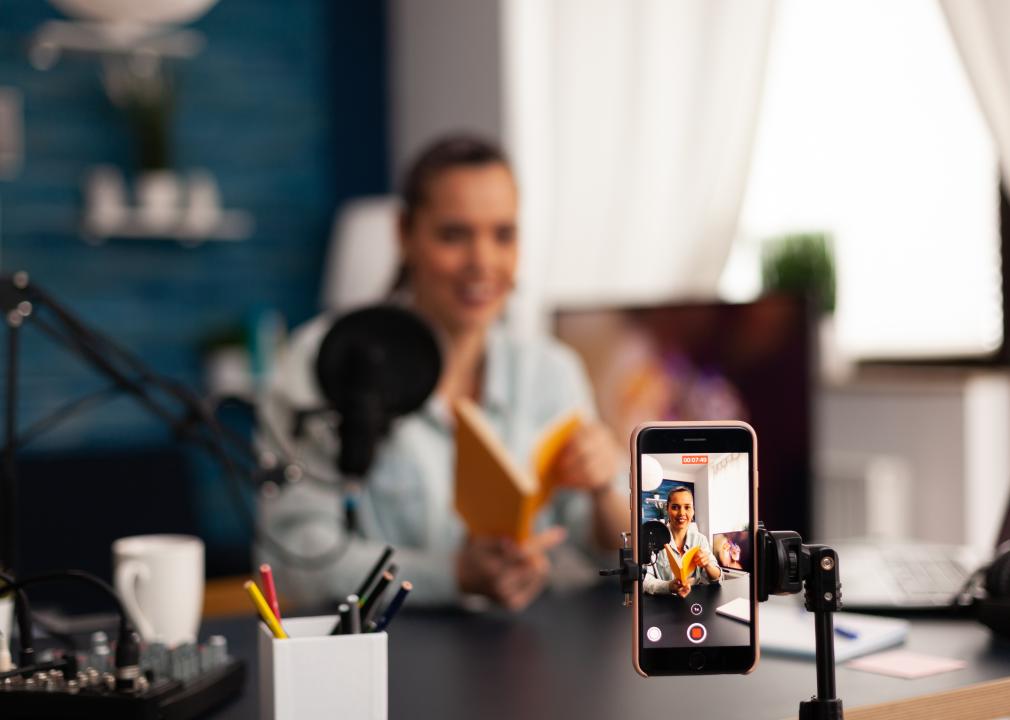Influencers are upending advertising. Here are 4 ways their brand collabs have changed the marketing game.
Chay_Tee // Shutterstock
Influencers are upending advertising. Here are 4 ways their brand collabs have changed the marketing game.
Young woman streaming and showing a package.
Successful brands have long recognized the importance of giving ad campaigns a face. Though seemingly new, the trend to use influential figures in marketing stems from a storied past of using fictional characters (think Ronald McDonald or “Mikey” for Life Cereal) and celebrities in high-profile campaigns.
But with the rise of social media, brands have turned to influencers—often everyday people who benefit from being more relatable, authentic, and trustworthy than untouchable celebrities—to promote their products and services. While Michael Jordan’s history-making Nike campaign and Dior’s use of A-list actresses like Monica Bellucci and Natalie Portman to elevate its luxury goods may have set the mold, now it’s influencers who are expanding the reach, influence, and impact for brands—and themselves—alike.
Collabstr scoured press coverage and analyzed marketing campaigns to dissect how brands collaborate with influencers to sell products. Influencers have lots of sway within their niches: 69% of social media users say they trust influencer product recommendations, along with recommendations from friends and family, more than information delivered directly from a brand, according to a 2023 Matter Communications survey. And as social media use skyrockets, with Kepsios estimating over 5 billion user profiles worldwide as of April 2024, representing an annual growth rate of 5.4%, there’s still plenty of untapped influencer potential.
Companies are building influencer partnerships into their brand DNA, even going so far as training their marketing departments as influencers. Be it on TikTok—which, according to an Influencer Marketing Hub 2024 report, is the most popular among brands using influencer marketing—Instagram, or Facebook, corporations are combining the power of social media with influencer leverage to transform marketing.
Here are four major trends that illustrate how brands are tapping into the power of influencers on social media and beyond.
![]()
Jerritt Clark // Getty Images
Influencer-designed collections and partnerships
Travis Scott surprises crew and customers at McDonald’s for the launch of the Travis Scott Meal.
In 1984, the birth of Nike’s Air Jordan sneaker became a cultural phenomenon that set a precedent for collaborations between brands and entertainment and sports superstars who embodied their values. Today, celebrity-curated collections and brand partnerships are everywhere. Consider McDonald’s $6 celebrity value meals, with the likes of rappers Saweetie or J Balvin “remixing” a custom menu item, or famed visual artist and architect Virgil Abloh’s rug collaboration with Ikea. Some partnerships work because they’re unexpected—like when talk show host Jimmy Kimmel designed limited-edition Crocs.
These partnerships are especially popular branding strategies for apparel and food products. They not only help reinforce brand identity, but give longtime companies the latitude to evolve with new audiences. Smaller brands and influencers have taken note.
Jo-Ann Fabrics recently partnered with up-and-coming fashion nano influencers (those with 1,000-10,000 followers) to celebrate Pride and Juneteenth. Nano influencers are small but mighty; they tend to be extremely engaged among a niche interest or community. With over 100,000 followers, macro influencers tend to engage their communities with authentic content and personal stories.
Nano and micro fashion influencers like Danielle Marie Lazala Roques and Kenjah Battle Zagal help an 80-year-old company like Jo-Ann draw in a younger, more diverse audience—and give the designers a chance to flex their creative muscle (and perhaps a shot at a major label deal).
Rachel Murray // Getty Images
Influencer ‘stamp of approval’
NYX Makeup Store Influencer Meet & Greet with Influencer Adelaine Morin.
One of the main differences between traditional celebrity and influencer endorsements is authenticity. Whereas stars sign on for a paycheck and may or may not be fans of a product, influencers tend to share the same values of the product or company they’re backing and genuinely believe in its worth. That credibility (whether real or perceived) creates a connection.
The best influencers are on par with a trustworthy friend; their stamp of approval carries the weight of a solid word-of-mouth referral. It’s no surprise that this approach is often employed by health and food, beauty, fitness, and travel brands, offering consumers the vision of an ideal lifestyle—or just a better one. Consider dairy company Stonyfield Organic’s recent partnership with @feelgoodfoodie, a food influencer known for her healthy, family-friendly meals. In a sponsored post, the influencer shared a recipe using Stonyfield yogurt, bringing the product to her followers while reinforcing her healthy credibility (and her brand) with a fun video of her whipping up a marinade.
These partnerships create buzz for the product and the person alike: Stonyfield pops up in the feeds of its target market, and @feelgoodfoodie saw increased engagement compared to other recent posts, according to SocialBlade. Followers win, too: By commenting on a post, they get a link to the full recipe (and boost the post’s engagement in the process).
Jeremy Moeller // Getty Images
Viral influencer-led challenges
The exterior of a Chipotle Mexican Grill.
Whether it be to raise awareness for a cause such as the 2014 ALS Ice Bucket Challenge or a silly and sentimental competition like the #tenyearchallenge of 2019, viral challenges continue to trend hard. They are particularly popular in the realm of beauty and self-improvement, where viewers can see a week- or month-long progression or transformation after a lifestyle change. These healthy competitions also boost donations: ALS raised $115 million and spawned more viral challenges for rare diseases.
Ongoing challenges also promote repeat engagements, bringing viewers back to their favorite influencers. Consider the Chipotle Bowl #LidFlip challenge, which leveraged the reach of internet personality David Dobrik. By soliciting videos from followers as they creatively flipped the lid of Chipotle’s burrito bowls, the stunt broke digital records and made the fast-casual chain one of the most followed brands on TikTok.
DC Studio // Shutterstock
Influencer giveaways and discounts
Vlogger holding book during review for social.
Since Oprah Winfrey created a sensation with her “Favorite Things” giveaways (“And you get a car!”) on her eponymous talk show, brands and influencers have been collaborating on next-level promotional giveaways.
Giveaways benefit both parties: Brands get free ad time, influencers get more followers and engagement, and followers get the chance to win a gift. The only currency followers must pay in is their attention: comment on a post, answer a quick survey question, tag a friend, or follow another brand for a chance to win.
Some lifestyle brands, like Pact Clothing, have influencer programs that offer a 40% discount to people who “share similar values.” These influencers may then be tasked with promoting giveaways or clothing drops, often at key points in the sales cycle. Pact offered its Instagram followers a $250 credit to celebrate summer just when their audience was likely itching for shorts and tees. As technology advances and influencers and companies can now create a single lottery across several social media platforms, online giveaways may only increase in popularity.
Story editing by Alizah Salario. Additional editing by Kelly Glass. Copy editing by Kristen Wegrzyn. Photo selection by Clarese Moller.
This story originally appeared on Collabstr and was produced and
distributed in partnership with Stacker Studio.
